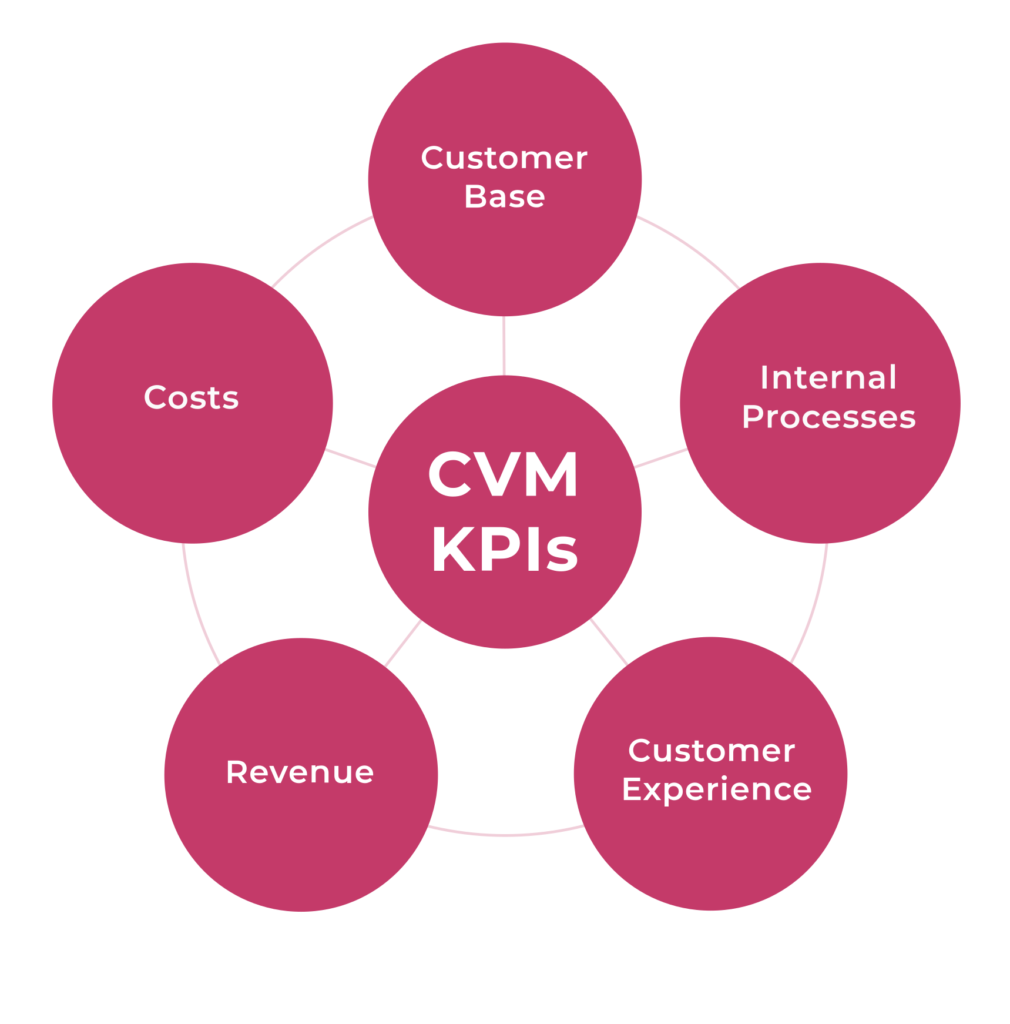The easiest way to define the importance of CVM role in organization is to start from it’s KPIs. The essence of the CVM role is to drive business impact.
There are 5 primary KPIs that are typically delegated for CVM role:
- Customer base. Customer base size, churn rates, on boarding rates, etc.
- Revenue. The total revenue from customer base, average revenue per user, profitability, etc.
- Customer Experience. The customer experience KPIs such as Net Promoter Score (NPS), Customer Satisfaction Score (CSAT), etc.
- Costs*. This group captures costs KPIs related to serving customer such as product usage related costs, debt collections, customer service calls etc.
- Internal Processes*. This group captures the metrics related to how well the internal processes are developed, their agility (e.g. time to create new campaign), costs to run them etc.
* Costs and Internal Processes KPIs are optional. The decision to include or exclude these KPIs from a CVM function accountability is made based on the preference of every organization.

Five major categories of CVM KPIs
A very important overarching KPI is Customer Lifetime Value (CLV), as it balances all 5 groups of KPIs above. Many companies choose to use this metric as a primary metrics to track the impact of the CVM function.
CLV = Customer monthly value ✕ Customer lifetime in months
Calculating CLV is a nuanced process and highly depends on the company’s preferences as there are several variations of the methodology, e.g.:
- Calculating the value for whole customer lifetime (CLV) or only track the future customer lifetime value (FCLV).
- Go a simpler out and use only customer revenue or do a full exercise and also include the costs.
- Estimate the CLV for the full base, a specific segments, or on every customer individually.
However it is a great single metric that captures majority of what is important in CVM.
CVMBoK © 2023 by Exacaster is licensed under CC BY-NC 4.0



